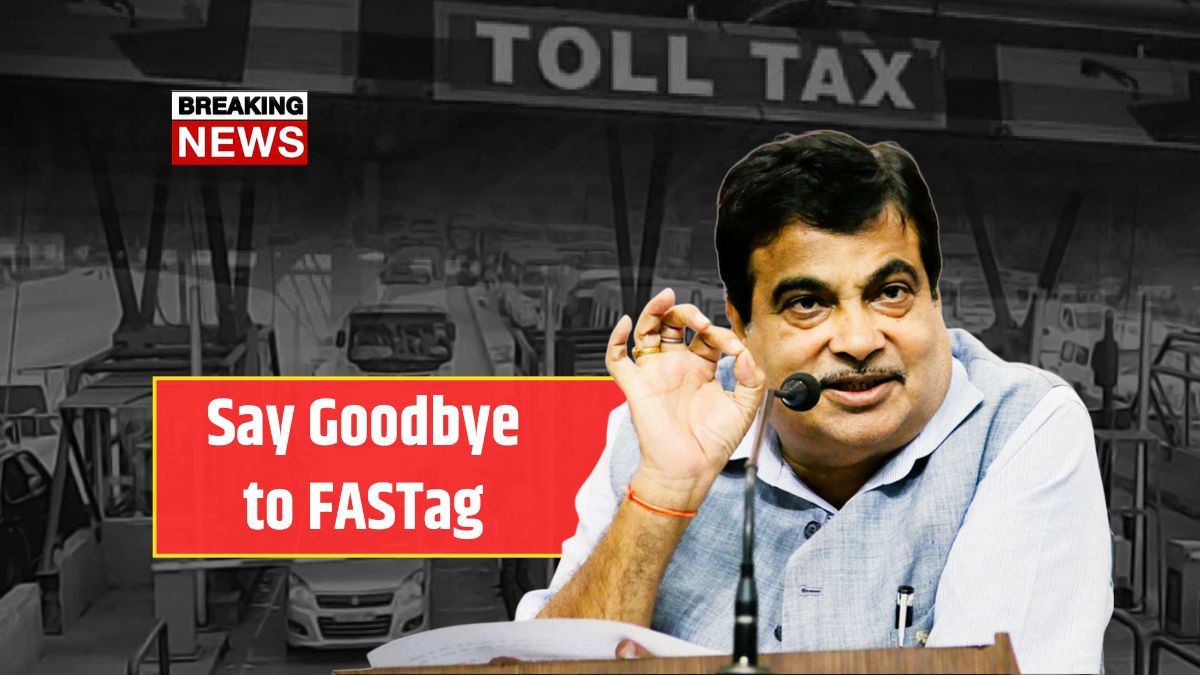New FASTag Digital System – From May 1, 2025, India’s toll system is getting a major upgrade. The familiar FASTag system that we’ve all been using to pay at toll plazas will start getting phased out, and in its place, a new GPS-based toll collection system is being introduced. This shift is all about making highway travel smoother, faster, and more tech-driven.
What’s Happening from May 1?
The Ministry of Road Transport and Highways has announced that FASTag will no longer be the default toll method. Instead, tolls will now be collected based on how far you travel on highways, not by crossing physical toll booths. The idea is to reduce stops on the road, cut down waiting times, and make the process fully digital.
How Will the New Toll System Work?
Under the new setup, vehicles will have a device called an On-Board Unit, or OBU. This device uses GPS to track how far your vehicle travels on national highways. Based on the distance, toll charges will be automatically calculated and deducted from your linked bank account or digital wallet.
In addition to GPS tracking, automatic cameras installed along the highways will help verify the vehicle’s number plate. This means no more queues at toll plazas and no more stopping to scan FASTags.
What’s the Difference from FASTag?
The biggest change is that FASTag was based on RFID scanners at fixed toll booths. You paid a fixed fee every time you passed one. But the GPS toll system is much more advanced. It charges you based on the actual kilometers you travel. Also, FASTag still required you to slow down or stop briefly. With GPS tolling, you won’t need to stop anywhere, as the entire process will happen digitally in the background.
The new system is expected to be more secure too, since it’s harder to misuse compared to RFID tags, which were sometimes cloned.
What You Should Do Now
If you own a vehicle and use highways regularly, you’ll need to get ready for the change. Here’s what you should take care of:
- Get the OBU device installed in your vehicle before May 1.
- Register yourself on the new mobile app being launched by the government to track toll usage and payments.
- Make sure your bank account or UPI wallet is linked properly.
- Ensure your vehicle’s number plate is clear and easy to read, because the cameras will rely on it.
- Double-check that your vehicle’s information is up to date on the government portal.
Why This Change is a Good Thing
This new system is being seen as a big win for both travelers and the government. Here’s why:
- No more stopping at toll plazas.
- Charges are based on the actual distance traveled, which feels fairer.
- Traffic will flow more smoothly without toll booth bottlenecks.
- The whole system will run digitally, reducing the need for manual checks.
- It will promote the use of digital payments in daily life.
- Environmentally, it’s better because vehicles won’t be idling in long queues.
But What About the Concerns?
Of course, any big shift like this comes with its own set of challenges. Some people are worried about the cost of installing the new devices. Others have privacy concerns about their movement being tracked in real time.
To tackle this, the government is likely to offer subsidies for the OBU device and ensure the data is secure and used only for toll-related purposes. They are also planning help centers and 24-hour customer support lines to assist during the transition period.
What If You Don’t Switch?
If you don’t move to the new system, you might face some penalties. These could include extra charges at toll points, delays due to manual checking, and in some cases, being fined for not using the new technology. Some vehicles might even be restricted from using certain highways.
Timeline for Full Rollout
The transition will happen in stages. It starts in major cities and Tier-1 areas from May, followed by expansion to national highways and finally, all major roads by early next year. By March 2026, FASTag will likely be completely retired.
This GPS-based toll collection system is a big leap forward in how India manages its highways. While it might take some getting used to, it promises to make road travel quicker, fairer, and more convenient. If you’re a vehicle owner, the best thing you can do is stay informed, get the required devices installed in time, and be ready to adapt.
No more waiting at toll booths. Just drive, and the system will take care of the rest.





